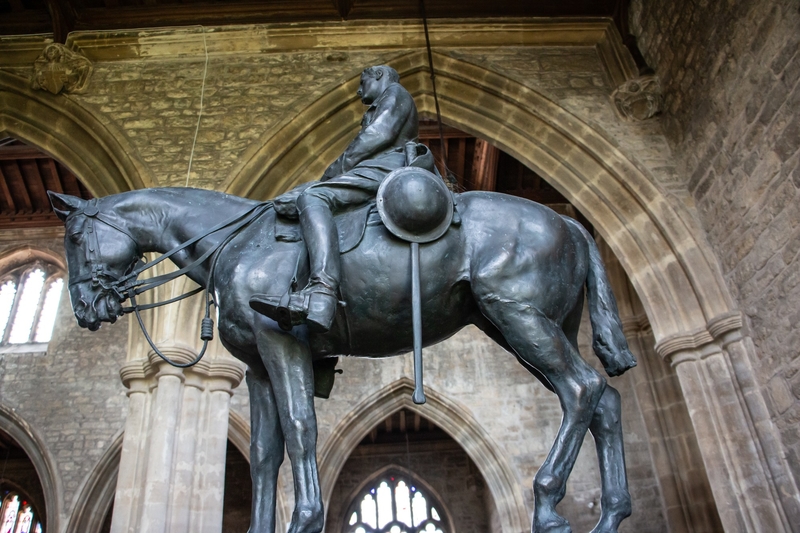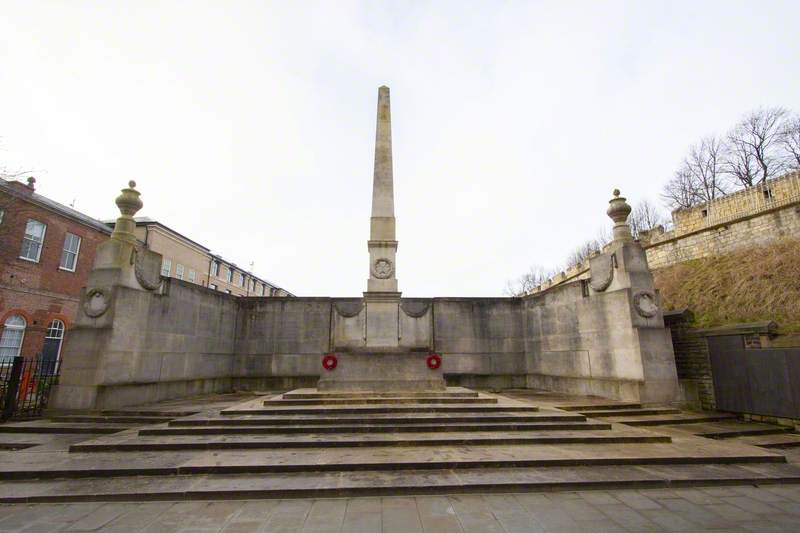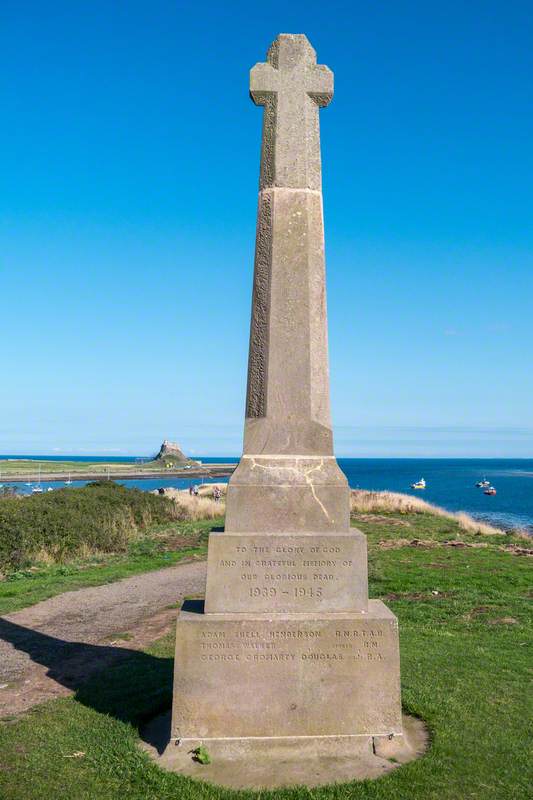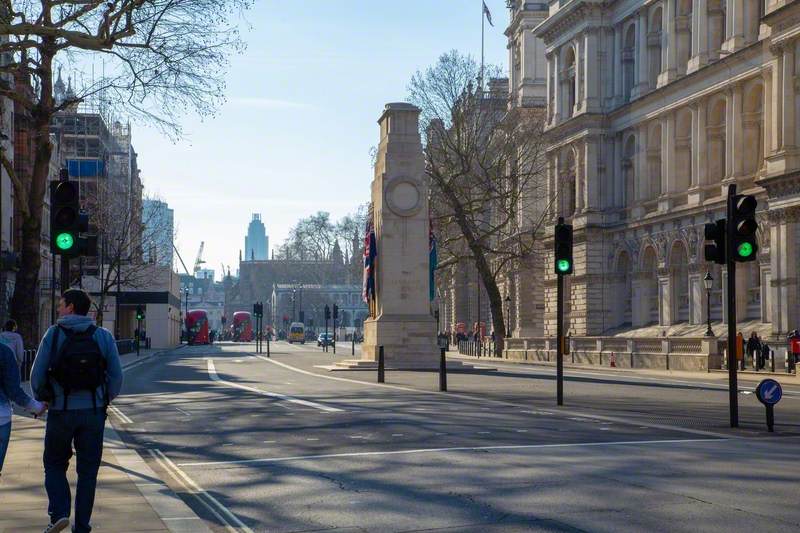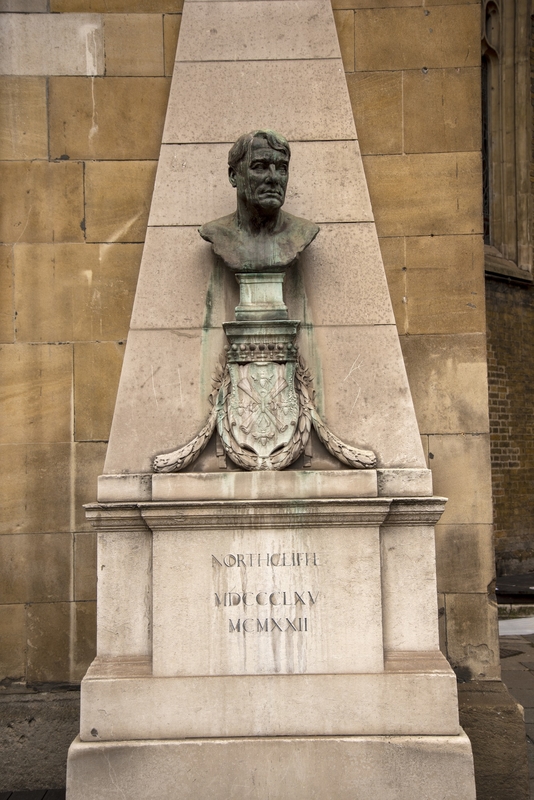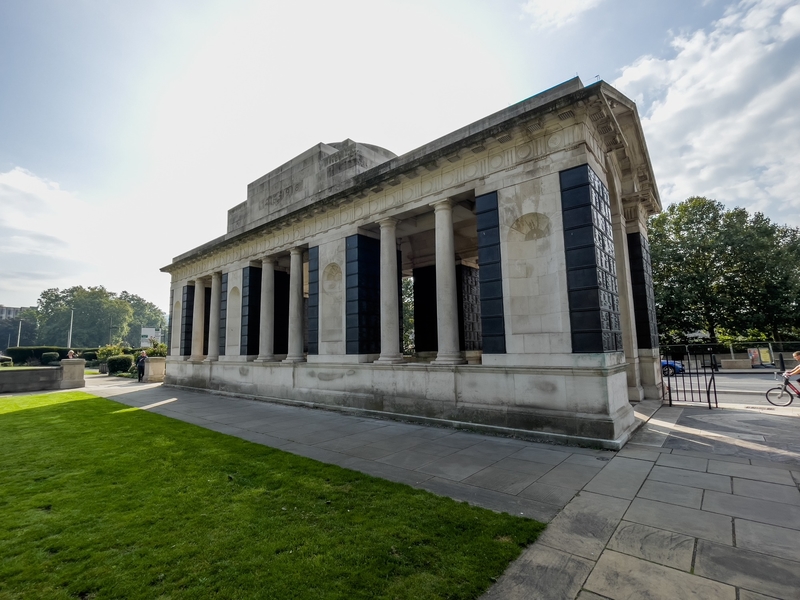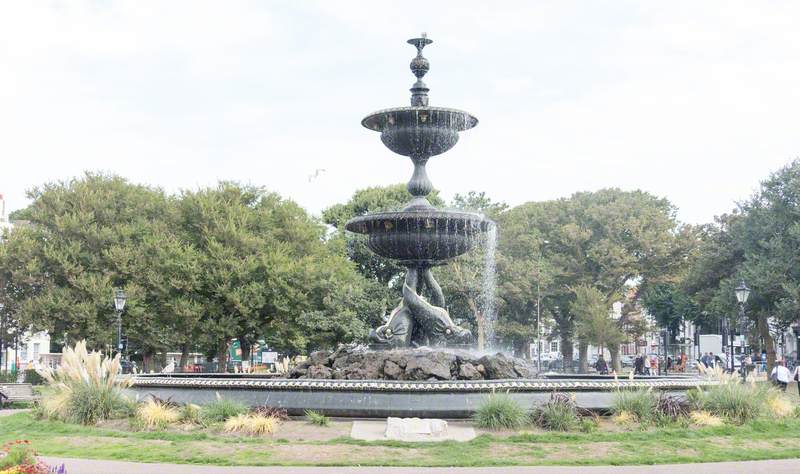Edwin Landseer Lutyens was born in London, England, on 29 March 1869 and studied architecture at the National Art Training School in South Kensington, London from 1885 to 1887. He left without finishing the course to become an articled pupil in the office of the architects Ernest George (1839-1922) and Harold Ainsworth Peto (18 54-1933) in London. He remained with them for a year before leaving to set up his own practice near Farnham in Surrey in 1889 at the age of nineteen. He subsequently remained in independent private practice for the rest of his career as an architect.
Works by Lutyens included Cottage in Littleworth, Surrey (1889); Crooksbury Lodge, near Farnham Surrey (1890, east wing, 1898); Munstead Wood, near Godalming, Surrey for Gertrude Jekyll (1896); Fulbrook, near Elstead, Surrey (1897); Goddards, Abinger, Surrey (1898); Snatchup End Cottages, Asply, Hertfordshire (1898); Orchards, near Munstead, Surrey (1898-99); Overstrand Hall, Overstrand, Norfolk (1899); Tigbourne Court, near Witley, Surrey (1899-1901); Grey Walls, Gullane, East Lothian, Scotland (1900); Deanery Gardens, Sonning, Berkshire(1901); Marshcourt, near Stockbridge, Hampshire (1901); Abbotswood, Lower Swell, Gloucestershire (1901); The Hoo, Willingdon and Jevington, East Sussex (1901); Marshcourt, Marsh Court, Stockbridge, Hampshire (1901-05); Monkton House, West Dean, West Sussex (1902); Little Thakeham, near Pulborough, Sussex (1902-03); St Mary's Church, Pixham, Dorking, Surrey (1903); Papillon Hall, Lubenham, Leicestershire (1903); Restoration of Lindisfarne Castle, Holy Island, Northumberland (1901-14; Country Life office building, Tavistock Street, Covent Garden, London (1904); St.
John's Institute, Smith Square, Westminster, London (1904); Hestercombe Gardens, West Monkton, Somerset (1904-06); New Place, Shirrell Heath, Hampshire (1904-06); Nashdom, Taplow, Buckinghamshire (1905); Lambay Castle, Country Dublin, Ireland (1905-12); Heathcote, near Ilkley, Yorkshire (1906-08); Dorland House, 40 Kingsway, London (1906); Folly Farm, Sulhamstead, Berkshire (1906-12); Middlefield, Great Shelford, Cambridgeshire (1908-09); Les Communes, Vereneville, Normandy, France (1909-30); St. Jude's Church and Free Church, Hampstead Garden Suburb, London (1909-13); Vicarage, manse and houses in North Square, Hampstead Garden Suburb, London (1910); Abbey House, Barrow-in-Furness, Cumbria (1910-14); Anglo-Boer War memorial, Johannesburg, South Africa (1910-14); Johannesburg ART Gallery (1910-15); Castle Drogo, near Drewsteignton, Dartmoor, Devon (1910-30); House, 7, St. James Square, London (1911); Henrietta Barnett School, Hampstead Garden Suburb, London (1911); House, 36 Smith Square, Westminster, London (1911); Theosophical Society (now headquarters of the British Medical Association, Tavistock Square, London (1911-25); British School at Rome, Rome, Italy (1912-18), Rashtrapathi Bhavan, Viceroy's House, Delhi (1912-29); Jaipur Column, Delhi, India (1912-30); House, 18 Little College Street, Westminster, London (1912); Viceroy's House and other buildings in New Delhi, India (1912-31); Town cemetery, Béthune, Pas-de-Calais, France (1917-18); India Gate, British India Army War memorial, New Delhi, India (1917-31); Arch of Remembrance, Leicester (1919); The Cenotaph, Whitehall, London (1919-20); War memorial, Ashwell, Hertfordshire (1919-21); Penheale Manor, Egloskerry, Cornwall (1920); War memorial, Mells, Somerset (1920); War memorial, Miserden, Gloucestershire (1920); Cenotaph, Southampton, Hampshire (1920); War memorial, Abinger Common, Surrey (1920); Devon County War Memorial, Exeter, Devon (1921); War memorial, Fordham, Cambridgeshire (1921); War memorial, Harburn, Northumberland (1921); War memorial, Hove, Sussex (1921); Leeds Rifles War memorial. Leeds (1921); War memorial, Lower Swell, Gloucestershire (1921); Midland Railway War memorial, Derby (1921); Queen's Own Royal West Kent Regiment Cenotaph, Maidstone (1921); Royal Berkshire Regiment War memorial, Reading, Berkshire (1921); South African War memorial, Richmond, Surrey (1921); War memorial, Southend-on-Sea, Essex (1921); Baroda House, Delhi, India (1921-36); War memorial, King's Somborne, Hampshire (1922); Lancashire Fusiliers War memorial, Bury, Lancashire (1922); Cenotaph, Manchester (1922); War memorial, Rolvenden, Kent (1922); War memorial, Rochdale, Lancashire (1922); War memorial, Spalding, Lincolnshire (1922); War memorial, Stockbridge, Hampshire, (1922); War memorial, Wargrave, Berkshire (1922); War memorial Busbridge, Surrey (1922); War memorial, Gerrards Cross, Buckinghamshire (1922); Holy Island War memorial, Lindisfarne, Northumberland (1922); War memorial, Muncaster, Cumbria (1922); Oxfordshire and Buckinghamshire Light Infantry War memorial, Oxford (1923); War memorial, Sandhurst, Kent (1923); Welch Regiment War memorial, Cardiff, Wales (1924); Civil Service Rifles War Memorial, London (1924); North Eastern Railway War memorial, York (1924); Midland Bank, Poultry, London (1924-29); Royal Naval Division War memorial, Whitehall, London (1925); War memorial, York (1925); War memorial, York (1925); British Ambassador's residence, Washington, DC (1925-28); War memorial, Northampton (1926); Hyderabad House, New Delhi, India (1926-28); War memorial, Norwich, Norfolk (1927); The Merchant Navy War memorial, Tower Hill (1928); Grosvenor Estate, Westminster, London (1928-30); War memorial, Thiepval, Picardy, France (1928-32); 100 King Street, Manchester (1928-35); Irish National War Memorial Gardens, Islandbridge, County Dublin (1930-40); Australian National Memorial, Villers-Bretonneux, Somme, France (1935-38); Benson Court, Magdalene College, Cambridge (1932); Linden Lodge School, Wimbledon, London (1934); 58-59 South Street, Mayfair, London (1936).
Lutyens was an early supporter of women's suffrage and was one of signaturies to the Men's League for Women's Suffrage's A Declaration of Representaive Men in Favour of Women's Suffrage in 1909. A number of women architects, including Elisabeth Benjamin (1908-1999) and Charlotte Clare Nauheim (1896-1959), received their initial training in his office.
Lutyens' awards and honours were numerous. He was elected a Fellow of the Royal Institute of British Architects (FRIBA) in 1906. He received the RIBA Royal Gold Medal in 1921 and the American Institute of Architects Gold Medal in 1924. He was knighted in 1918, and was awarded the Order of Merit in 1942. He was elected an Associate of the Royal Academy (ARA) in 1913, full Academician (RA) in 1920, and was President of the Royal Academy (PRA) in 1938. In 1932 the French Government made him an officer of the Légion d'honneur.
He died at his home in London on 1 January 1944.
Text source: Art History Research net (AHR net)
